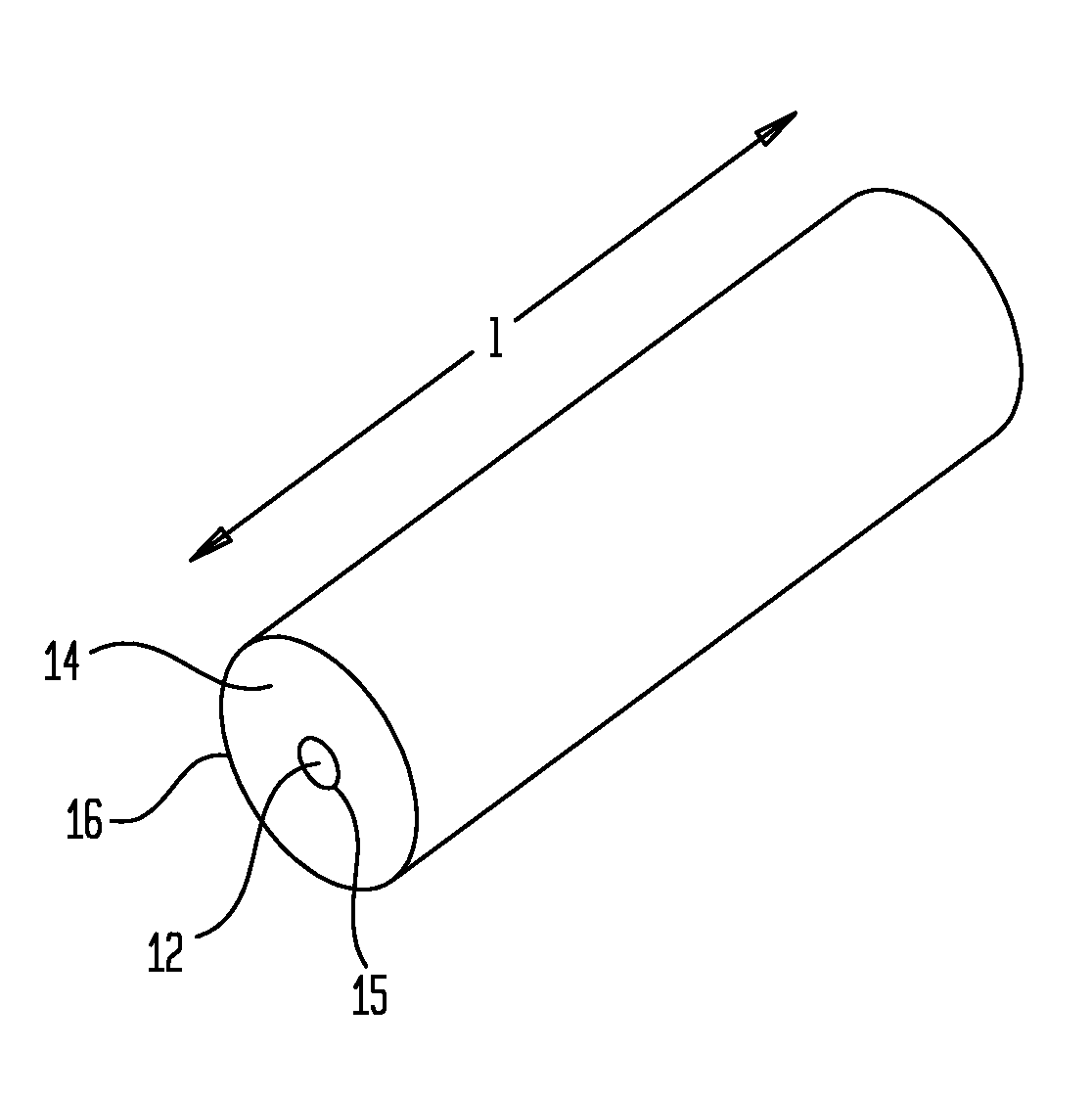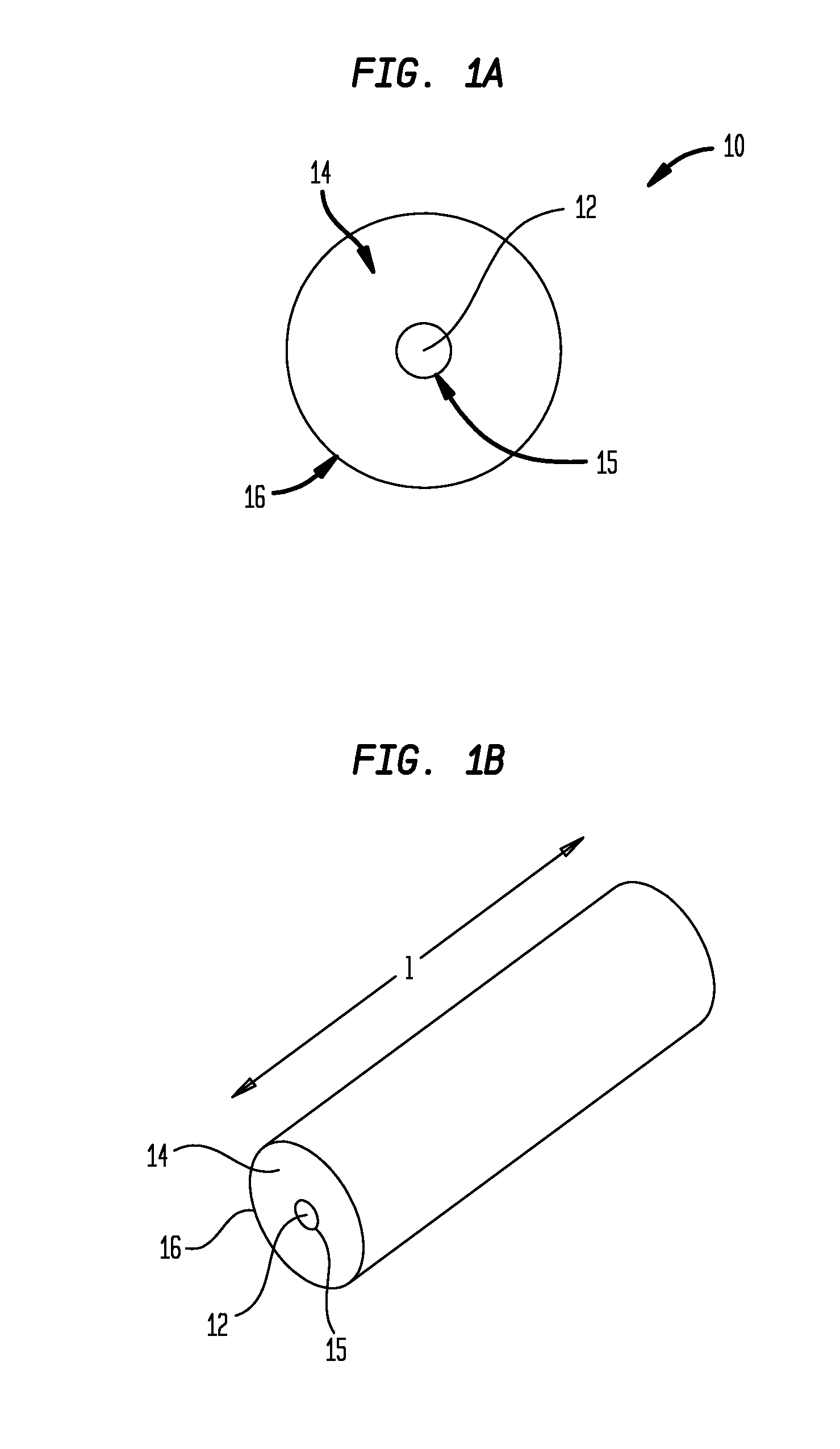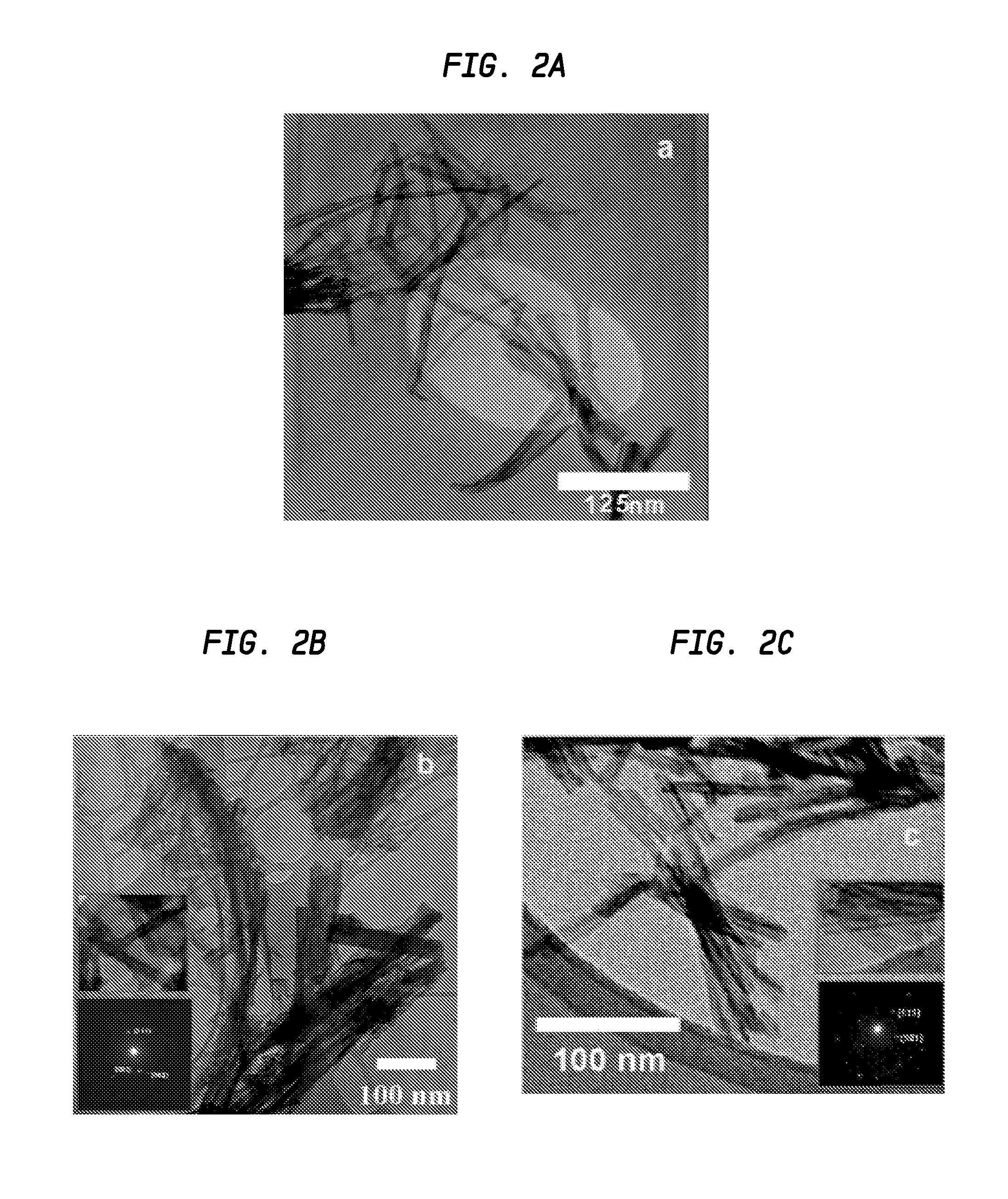Hydrothermal synthesis of perovskite nanotubes
a technology of perovskite nanotubes and nanotubes, which is applied in the direction of calcium/strontium/barium oxides/hydroxides, energy-based chemical/physical/physicochemical processes, germanium dioxide, etc., can solve the problems of high cost, high labor intensity, and high labor intensity, and achieve the effect of reducing the amount of impurities
- Summary
- Abstract
- Description
- Claims
- Application Information
AI Technical Summary
Benefits of technology
Problems solved by technology
Method used
Image
Examples
example 1
Preparation of TiO2 Nanotube Templates
[0049]TiO2 nanotube structural templates were prepared using the procedures described in T. Kasuga, et al., Langmuir, 1998, 14, 3160, and T. Kasuga, et al., Adv. Mater., 1999, 11, 1307. Specifically, 2.5 g anastase powder (Aldrich) was dissolved in a 20 ml, 10 M NaOH aqueous solution in a Nalgene flask, and refluxed over an oil bath for 20 hrs with continuous stirring. The resultant mixture was then treated with 0.1 M HCl solution and distilled water and thereafter sonicated. The treated powders were separated from the washing solution by centrifugation. The washing steps were repeated until the supernatant had a pH of less than 6.
examples 2 and 3
Preparation of Barium Titanate and Strontium Titanate Nanotubes
[0050]In a typical reaction to generate barium titanate and strontium titanate nanotubes, a mixture of Ba(OH)2 or SrCl2 (depending on whether the Ba or Sr perovskite nanostructure is desired) and the generated TiO2 nanotubes of Example 1 (with an initial molar ratio of 1:1) were combined under Schlenk conditions. In order to minimize contamination of products from atmospheric CO2, which could lead to the generation of carbonate impurities, the flask was thoroughly degassed upon the addition of deionized water.
[0051]The reaction mixture was subsequently refluxed over an oil bath for 20–60 h with stirring, under argon or nitrogen. The pH of the suspension was noted to be between 10 and 12, which was sufficiently high for the formation of the transition metal oxide nanotubes. Dropwise addition of sodium hydroxide and hydrochloride acid was used to control the pH of the resulting suspension. After the reaction, the suspensio...
PUM
| Property | Measurement | Unit |
|---|---|---|
| length | aaaaa | aaaaa |
| length | aaaaa | aaaaa |
| outer diameter | aaaaa | aaaaa |
Abstract
Description
Claims
Application Information
 Login to View More
Login to View More - R&D
- Intellectual Property
- Life Sciences
- Materials
- Tech Scout
- Unparalleled Data Quality
- Higher Quality Content
- 60% Fewer Hallucinations
Browse by: Latest US Patents, China's latest patents, Technical Efficacy Thesaurus, Application Domain, Technology Topic, Popular Technical Reports.
© 2025 PatSnap. All rights reserved.Legal|Privacy policy|Modern Slavery Act Transparency Statement|Sitemap|About US| Contact US: help@patsnap.com



